Your Guide to Exercises for Incontinence

If you’re living with occasional or chronic incontinence, you’ve probably wondered what actions you could take to curb leaks. Do simple solutions exist? Is there a way to improve bladder health? Exercises for incontinence are your first line of defense against a leaky bladder. Even if you can’t cure your symptoms entirely, you may see a noticeable improvement.
In this article, we’ll review different types of exercises to control bladder leakage and strengthen your pelvic floor.
Kegel Exercises for Incontinence
As explained in our article, The Mysterious Pelvic Floor: Why Both Sexes Should Pay Attention, exercises to strengthen pelvic floor muscles help your urinary sphincter hold back urine completely and for a longer period. So when you get the sudden urge to go (urge incontinence) or leak when you laugh or cough (stress incontinence), you’re better able to control your bladder.
Kegel exercises target pelvic floor muscles, especially those that control the urinary sphincter, which prevents urine from releasing involuntarily.
To perform basic Kegel exercises for incontinence, follow these steps:
- You can perform Kegels sitting, standing, or lying down
- Experiment to locate the muscles you use to stop urine flow
- Tighten those muscles as much as you can
- Keep the rest of your body relaxed (including abs, butt, and thighs)
- Breathe normally
- Hold the tightened muscles for three to five seconds (feels like they are lifting upwards)
- Rest for a few seconds
- Repeat ten to fifteen times, doing up to three sets per day
As your pelvic floor muscles become stronger, you’ll be able to tighten them for longer periods.
Kegel Exercises for Men and Women
Both genders can benefit from Kegels. Childbirth is the most common reason for a weakened pelvic floor in women, but for men, it’s often due to prostate surgery. However, Kegels can help both men and women improve incontinence symptoms or sexual health.
Men perform Kegel exercises in the same way that women do. But it’s sometimes more difficult for men to locate their pelvic floor muscles. Once you’ve mastered the technique, expect to notice an improvement in urinary or sexual symptoms within a few weeks or a few months.
Yoga Exercises for Incontinence
You can also consider yoga for frequent urination and incontinence symptoms. If you want to strengthen the pelvic floor, you also need to know how to relax it. And with yoga exercises for incontinence, you stretch and strengthen key muscles for urinary health.
Yoga employs whole-body relaxation and core-strengthening poses. Major muscles that make up your “core” include:
- Pelvic floor muscles
- Obliques
- Diaphragm
- Abdominal muscles
- Muscles along the spine
These core muscles are what support the rest of your body, including your other muscles and organs.
The key to a healthy bladder isn’t just a “strong” pelvic floor. You also want these muscles to be resilient. If you have resilient pelvic floor muscles, they’re not too tight (causing incomplete emptying that results in frequent urination) or too loose (causing incontinence).
Yoga can help you achieve the right balance between flexibility and strength for improved bladder health.
Types of Yoga Exercises for Incontinence
If you want to try yoga for bladder control, try signing up for a yoga class or use a free app like Down Dog. Meanwhile, here are some common yoga poses for incontinence symptoms:
Child’s Pose

- Kneel on your mat, toes touching
- Spread your knees to touch each edge of the mat
- Walk your hands forward, lowering your torso between your thighs
- Continue stretching forward until your forehead and nose touch the mat
- Press your palms into the mat and your hips toward the floor
- Hold one minute
Reclined Butterfly
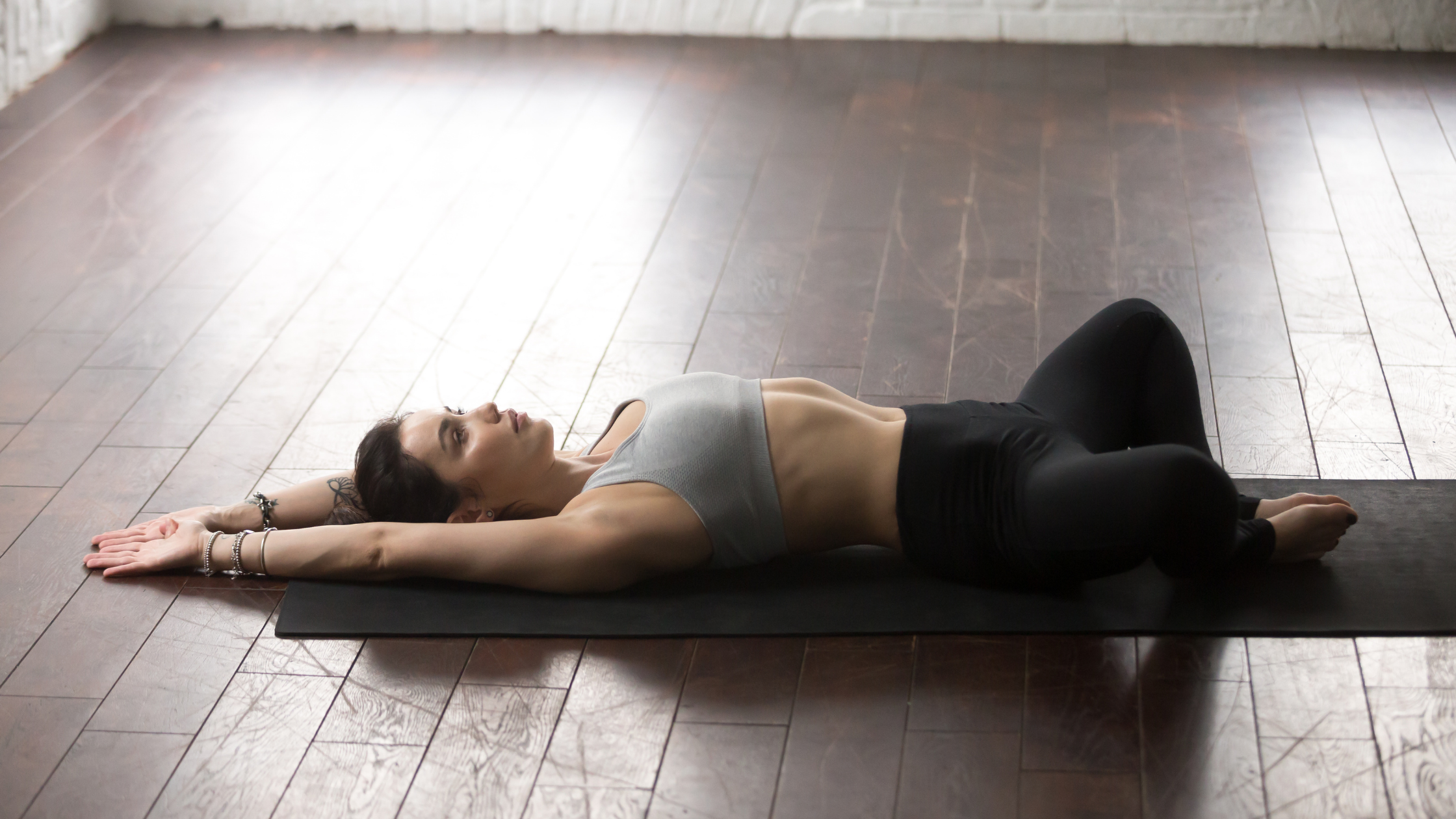
- Lie with knees bent and feet flat on the floor
- Bring the soles of your feet together, letting your knees fall to the sides
- Rest your arms at your sides, palms up (or stretch them overhead)
- Close your eyes, breathing deeply
- Hold for one minute
Malasana-Squat
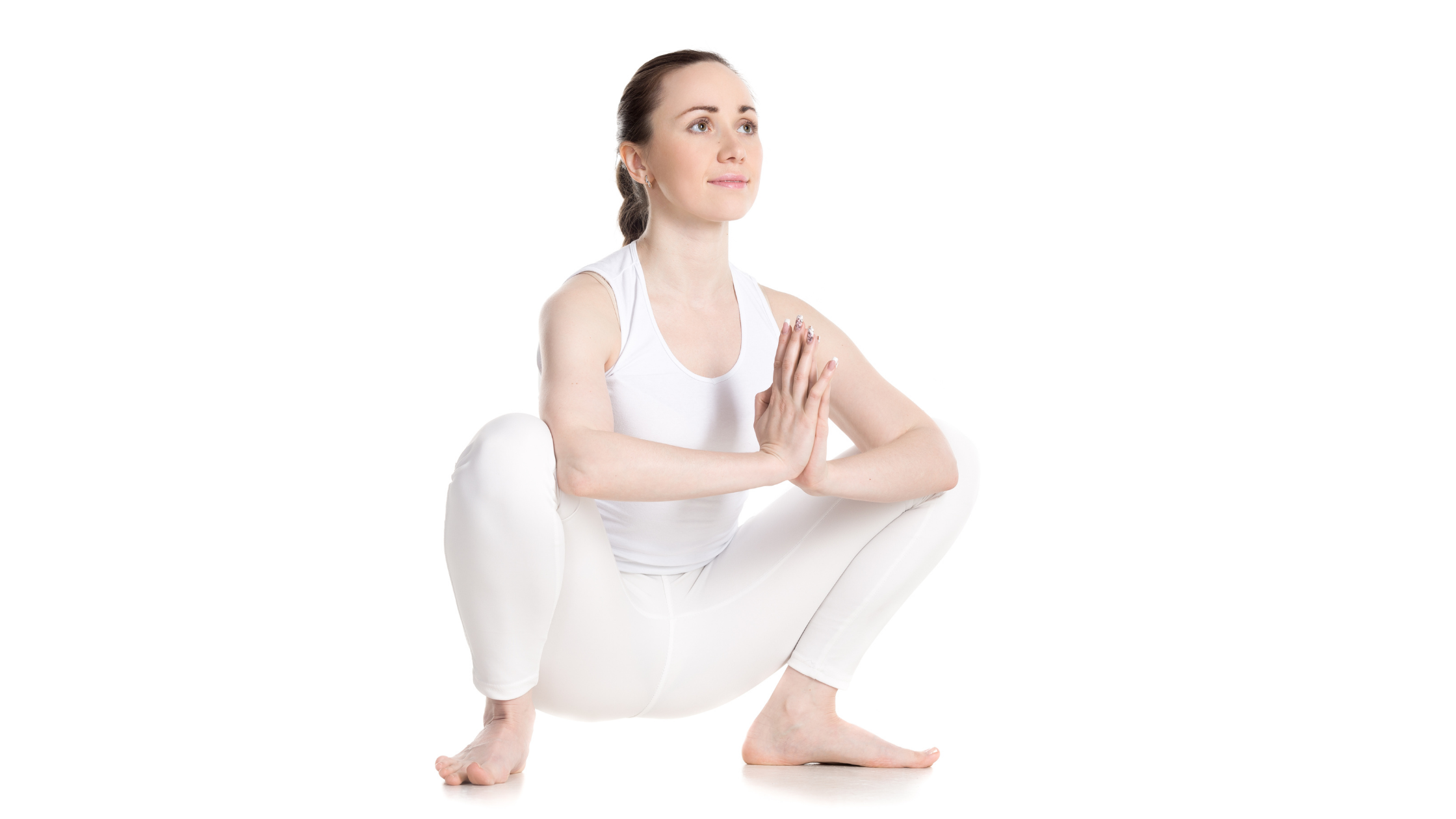
- Position feet shoulder-width apart
- Lower down, bending your knees until your calves touch the back of your thighs
- Knees should be pointed toward the ceiling
- Lean forward, raise your seat (bottom) so you’re squatting on your feet
- Keep heels in contact with the floor
- Bring your hands together between your knees
- Press your elbows against your inner thighs and hold one minute
Waterfall Pose (Legs Up the Wall)
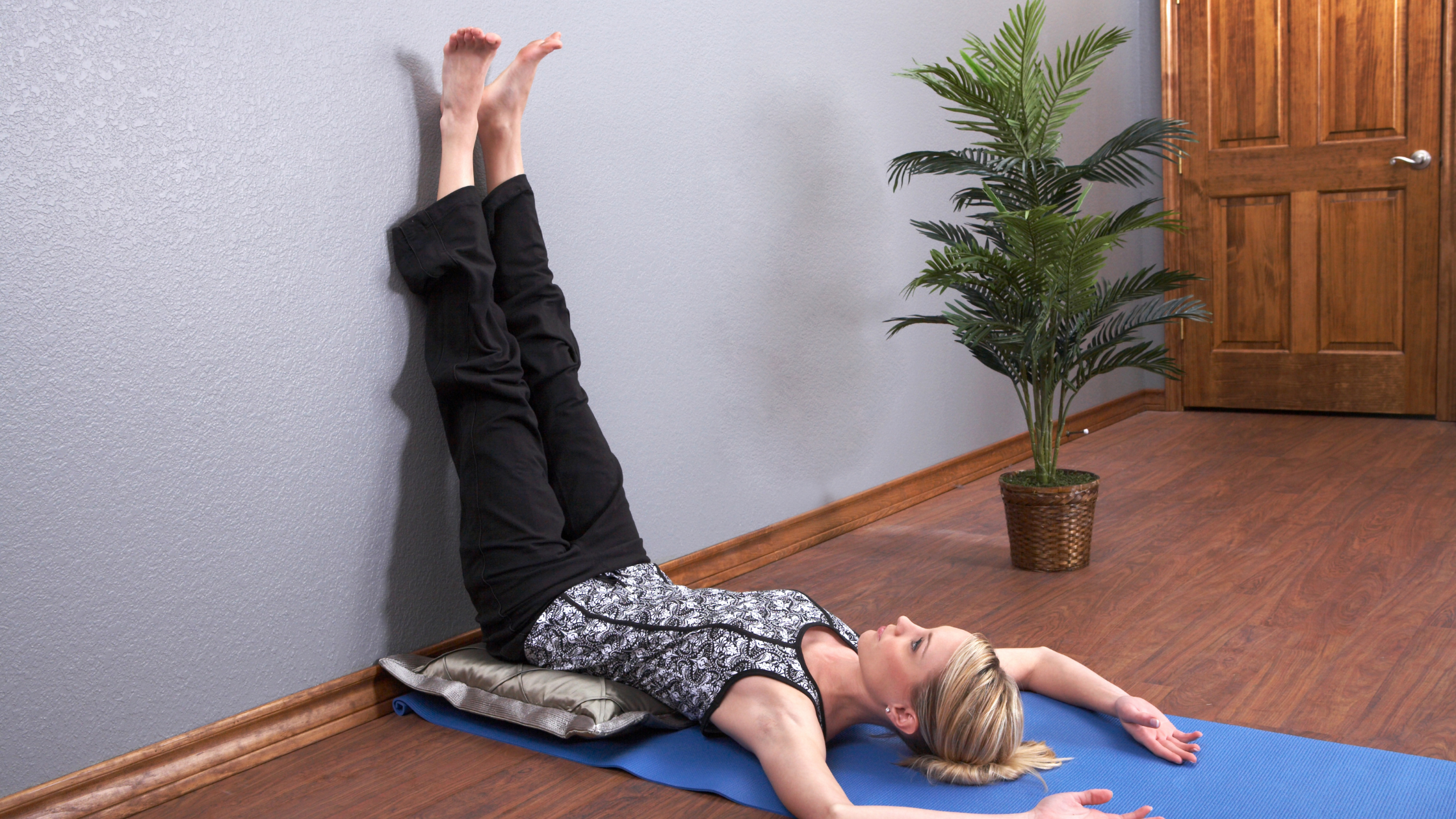
- Lay flat on your back
- Raise your legs straight up and hold
- Soles of your feet should face the ceiling
- For additional support, perform the same action with legs resting against a wall
- Hold for 30 seconds or one minute
Bridge Pose
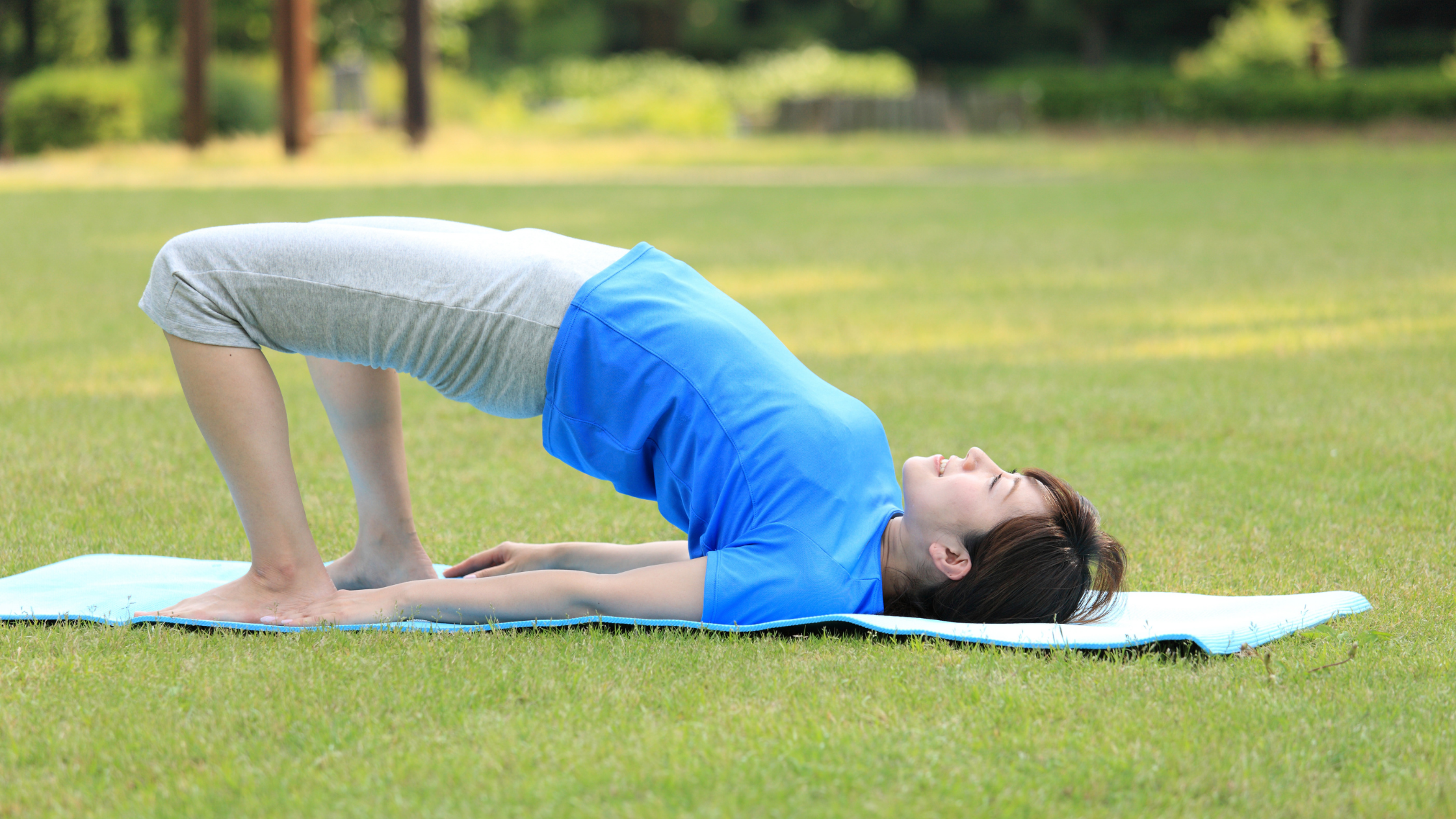
- Lay on your back shoulders flat against the floor
- Position your arms at your sides to keep you stable
- Lift your seat and torso upward, keeping your feet flat on the floor
- Hold 30 seconds or one minute
Chair Pose

- Make sure your feet are aligned with your hips
- Bend your knees but be sure you can still see your toes
- Extend your arms overhead, keeping them aligned with your torso (straight line)
- Hold the pose for thirty seconds (if you can), breathing deeply
Triangle Pose
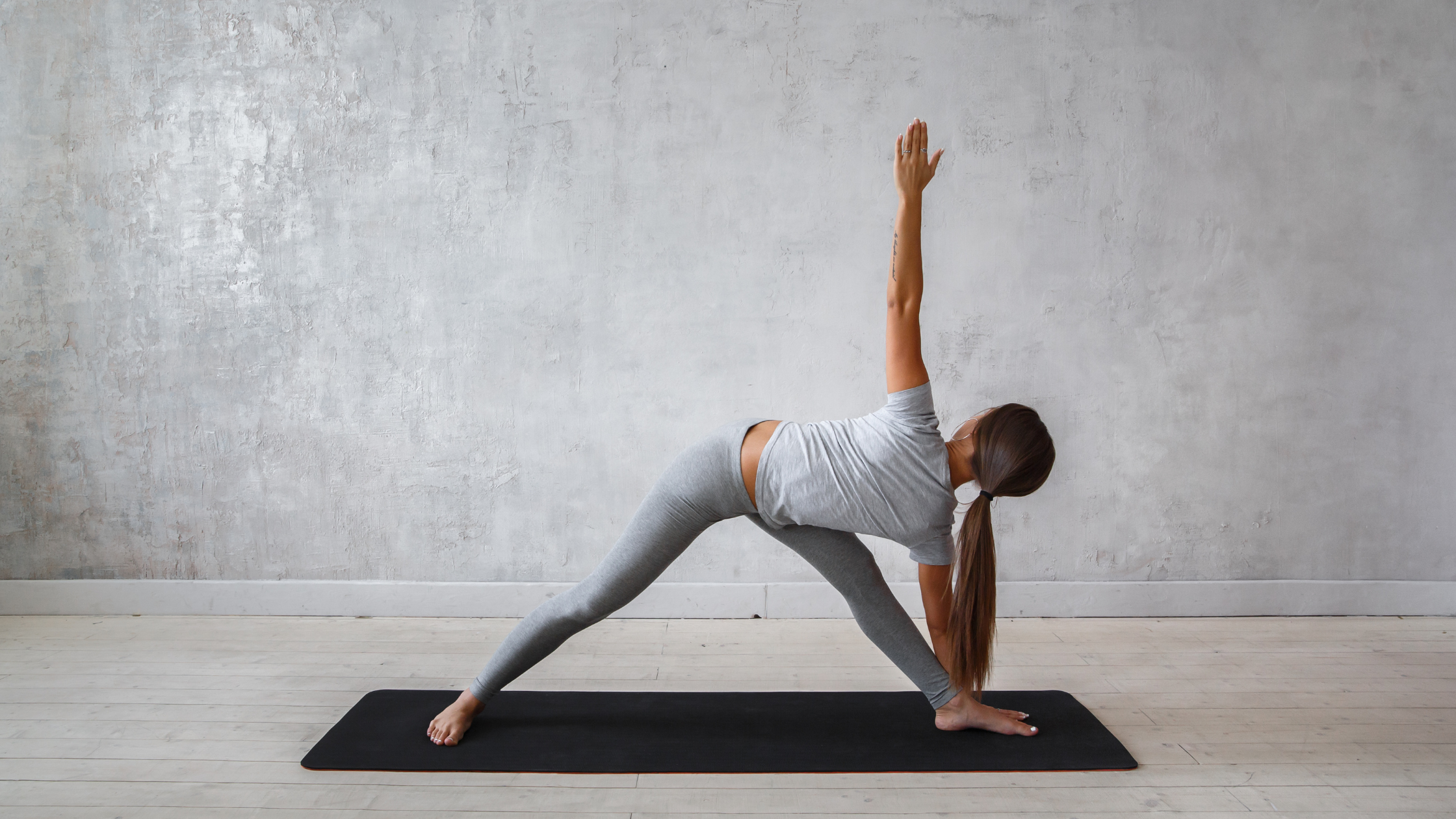
- Spread your feet wider than your shoulders
- Keep one foot facing forward, and the left foot turned out
- Bend and touch your right hand to the turned-out (left) foot, stretching your other hand straight up
- Hold the pose for thirty seconds (if you can), breathing deeply
- Repeat on other side
If you’re concerned about safety as you perform the standing poses, feel free to use a chair or wall to stabilize you as needed. If you think you need more support, the premium version of the Down Dog app has sessions for chair yoga. Poses are modified, allowing you to perform them seated or with the chair as a stability prop. These might be the best exercises for incontinence if floor poses and balancing poses aren’t ideal or safe for you.
Leak Protection While Exercising for Bladder Control
You might be thinking, “Sounds great, but exercise makes me leak more!” It’s a common problem, especially for women. For some tips on exercising with incontinence, check out our article, Exercising with Stress Incontinence: How to Beat the Leaks!
With the right incontinence products, you can outsmart those sneaky leaks, even during a yoga session. Try our Ultra-Thin Pads for light leaks and our Protective Underwear for moderate to heavy incontinence.

